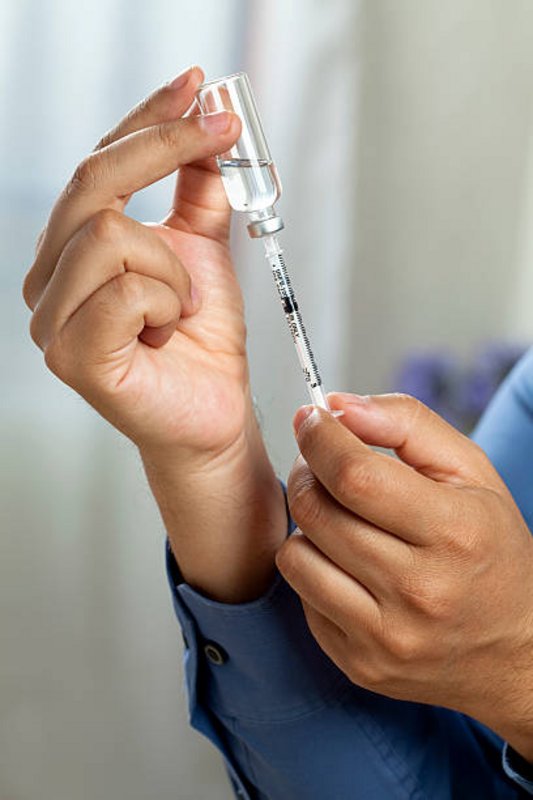
The structure of needles is very simple. They are made of a sharp point and a hollow center and then, a hub, that attaches them to syringes needles. The needle's shaft comes in different lengths that get measured in inches.
The gauges are utilized to measure the needle's diameter or thickness. The tip of the needle is often bevelled. This makes it easier to puncture. Selecting the right needle is essential. Let's look at our five top tips for choosing the right needle syringes needles.
Select the appropriate gauge
The choice of the appropriate gauge is based on skin thickness and the level of injections. The smaller gauge number, the greater the diameter or width. On the other hand, the greater the number, the thinner the size.
Needles with greater diameters have thicker walls. In turn, they'll last longer and more robust. They help to penetrate dense skin and viscous liquids.
A needle with smaller diameter (or larger gauge) causes less pain to the person receiving the injection. It's also a great option for medicines with a low viscosity. The most commonly used gauges are 27 and 26.
You'll need either 20G or 18G if you are using needles that pierce.
Select the Right Length
When selecting the length of the needle the length you choose depends on the individual's size. A larger needle is needed by an adult than for the size of a child. You'll also have to consider where you'll be inserting the needle.
Certain medications are absorbed through the skin. Others will have to be injectable into the muscle of a person.
Intramuscular injections are administered into the muscles. It's more deep than the skin's subcutaneous layer.
It is necessary to use an extra long needle and a thicker one to perform this type of injection. Explore needles that are an inch or less. 23 to 25 G is the gauge that you're seeking.
You should also consider the amount of the fat that your needle needs to go through. Someone who is slimmer could be using needles that are an inch long. A person who is heavier may require needles that are slightly larger.
Subcutaneous injections are utilized to inject fatty tissue under the skin. Subcutaneous injections are generally shallow, which means you need a short and small needle. A needle of 27-30 G which is about half" in length should be enough.
Take a measurement of the thickness of your skinfold
It is necessary to measure your skinfold. You may choose to measure an area of your abdomen or arm or thighs. It is important to select the region where you'll be injecting the most frequently.
Squeeze the skinfold using your thumb and forefinger. The skinfold should be pulled away from the muscles but ensure you're not just pulling your skin.
Find the area between your forefinger and thumb. An ordinary ruler will work to measure this.
If you're injecting subcutaneously The size of the needle should be 1/3" of the thickness of the tissue. For intramuscular injections, your needle must be at least 2/3" of the thickness of the tissue. This measurement will allow you to decide on the length of the needle.
Examine the Needle Bevel
The tip is created by the bevel, which is the curved side of the needle. It allows the fluid or medication to be injected into skin. Bevels are typically described as being short medium or long.
The goal of the bevel's design is to permit the needle to enter the skin far easier. The person administering the injection will also have to use less pressure.
While the bevel isn't essential for injection success but it is crucial. During an injection the bevel should be directed toward the bone. This reduces the chance of trauma and decrease a person's discomfort.
Think about the Needle's Function being used for.
We've discussed earlier, the type of needle you select depends upon the type of substance you're injecting. You'll require a thin needle if using it to inject Botox.
The most commonly used gauge to administer Botox injections is 30. However, an even smaller needle that's 32 G is employed to decrease the amount of pain caused by medical supplies. 32 G is twice smaller than a 30 G one.
If you suffer from diabetes and are experiencing pain from an insulin pen injector, you could eliminate that issue by altering the size of your needle. Short and thin needles are able to deliver insulin just as effectively as needles that are larger and more long.
Insulin and other medications are effective when they're injectable into the fatty tissue below the skin. Having a long needle isn't necessary. If you inject insulin into your muscles it will be used up faster and could cause bruising.
The most common needles for insulin pens are 29 to 32 G and 4mm-12mm in length. Since the skin is around 1.6mm thick and a needle that is 4mm long can penetrate the skin.
Knowing the viscosity of any medication or fluid you're injected in addition to playing a part in effectively choosing the proper gauge of needle. There are many things to think about. It is essential to select the one that will cause you as little discomfort and pain as is possible.
